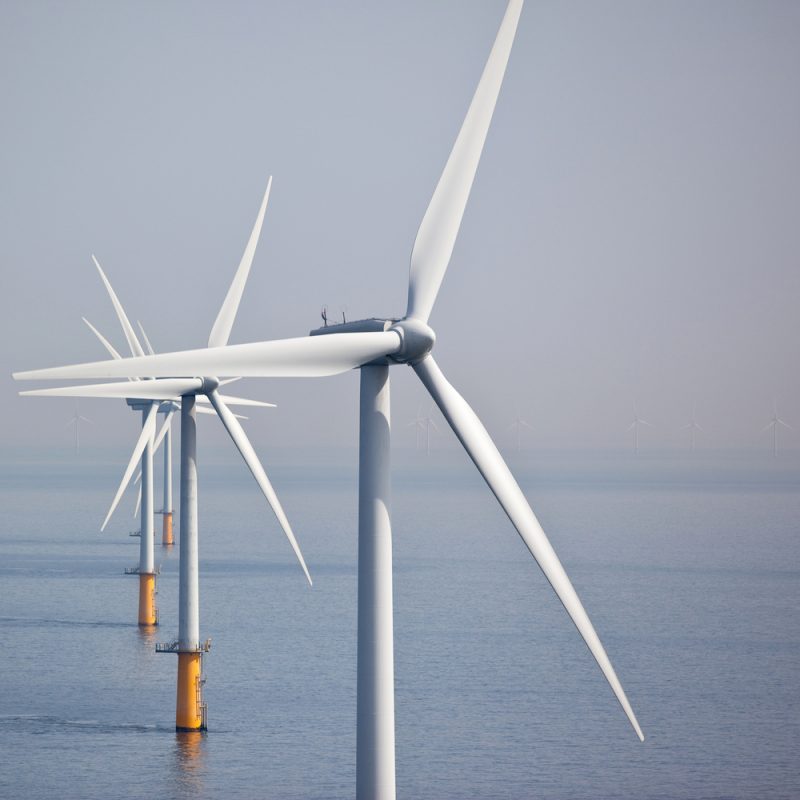Maryland commission approves nation’s two largest offshore wind projects

The Maryland Public Service Commission (PSC) recently awarded Offshore Renewable Energy Credits (ORECs) to two wind projects to be completed off the coast of Maryland that, if built, would be by far the nation’s largest offshore wind projects.
Baltimore-based company US Wind and Skipjack Offshore Energy, a subsidiary of Deepwater Wind, received the credits to build two separate projects off Maryland’s eastern shore near Ocean City.
US Wind proposed a 248-megawatt (MW) wind farm consisting of 62 turbines located between 12 and 15 nautical miles from shore. Skipjack’s proposal includes 15 turbines built between 17 and 21 miles offshore that will generate 120 MW.
“These projects will be the largest offshore wind projects in the U.S., spurring $1.8 billion in in-state spending, creating 9,700 new jobs and generating $74 million in state tax revenues,” Tori Leonard, communications director for the Maryland Public Service Commission, told Daily Energy Insider on Monday. “In addition, the projects will help Maryland reach its greenhouse gas reduction goals and meet the state’s renewable portfolio standard.”
The only other offshore wind project in the United States, Block Island, is located off the coast of Rhode Island, consists of just five turbines and has a capacity of 30 MW. Block Island is owned by Deepwater Wind. US Wind has a lease for another area off the coast of New Jersey that is three times the size of its Maryland site, but the state is further behind in the regulatory process.
US Wind estimates its project would cost $1.4 billion to build. Skipjack’s would cost approximately $720 million. The PSC awarded the ORECs at a price of $131.93 per megawatt-hour (MWh) for a period of 20 years that begins in January 2021 for U.S. Wind and in 2023 for Skipjack.
Levitan & Associates, Inc., the Commission’s independent consultant, projected that the projects would cause an increase of less than $1.40 per month in residential customers’ bills and have an impact of less than 1.4 percent on the annual bills for commercial and industrial customers. New rates would not take effect until the projects begin generating electricity.
The PSC attached around 30 conditions to the approval. These conditions require the companies to create at least 4,977 direct jobs through development, construction and operation of the projects and create opportunities for minority-owned companies to work with the companies as investors and on development and construction.
“All Maryland citizens can benefit from the economic opportunities these projects will create,” Commissioner Harold D. Williams said. “Moreover, I am pleased that this condition in our order, along with commitments made by the developers, will continue efforts to realize the state’s diversity and equal employment goals.”
US Wind and Skipjack must also pass 80 percent of construction savings onto customers and contribute $6 million each to the Maryland Offshore Wind Business Development Fund.
Another condition compels the companies to use port facilities in the Baltimore and Ocean City regions, collectively invest $39.6 million in port upgrades to the Tradepoint Atlantic shipyard in Baltimore County and invest at least $76 million in a Maryland steel fabrication plant.
An additional condition addresses one of the major concerns associated with the projects. Various parties have taken issue with the fact that the turbines may be visible from the Ocean City shore and have a negative impact on tourism in the area. Conditions in the approval require the developers to locate the turbines as far from the shoreline in the designated wind area as possible and use the best available technology to lessen their visibility from the shore.
The projects are expected to eliminate 19,000 tons of carbon dioxide emissions each year for 20 years. Maryland set a goal to reduce its carbon emissions by 40 percent by 2030, and the state’s Renewable Energy Portfolio Standard includes a mandate of 25 percent renewable energy by 2020 and a carve-out of up to 2.5 percent for offshore wind.
“The Maryland Offshore Wind Energy Act of 2013 (the enabling legislation) required the Commission to evaluate the projects on the net positive environmental, economic and health benefits,” Leonard said. “The Commission found that both projects will have significant positive benefits, including the potential to become a regional hub for a new industry.”
The companies must notify the PSC by May 25, whether it accepts the conditions of the approval. The federal government must also approve developers’ site assessment, construction and operations plans as well as other processes. The public will be able to have input in these federal review processes. If approved, the US Wind project is estimated to be operational by January 2020 and the Skipjack project is projected to be operational by November 2022.
